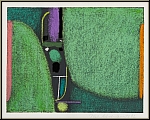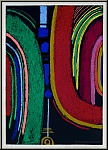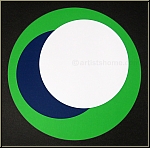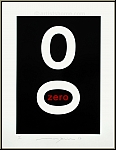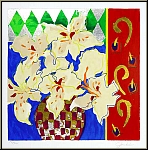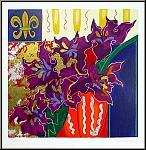Serigraphs - Screenprints

Screen printing was originally used for purely commercial purposes, for instance in order to print on textiles or posters. In order to distinguish between artistic printmaking and the use of the process in advertisement and the design of consumer goods, the term "serigraphy" was introduced.
Serigraphy became enormously popular through its use in Op Art and Pop Art. The most well-known works in this area are probably those by Andy Warhol, Robert Indiana, Roy Lichtenstein, Keith Haring, Francois Morellet, and Victor Vasarely. It was precisely this commercial origin of the screen printing process that was given artistic significance by these artists and it was deliberately embraced by them. They appropriated methods and motifs from advertisement and everyday life - i.e., pop – in order to create a new and fresh form of art. Screen printing offered the perfect technique for this end.

